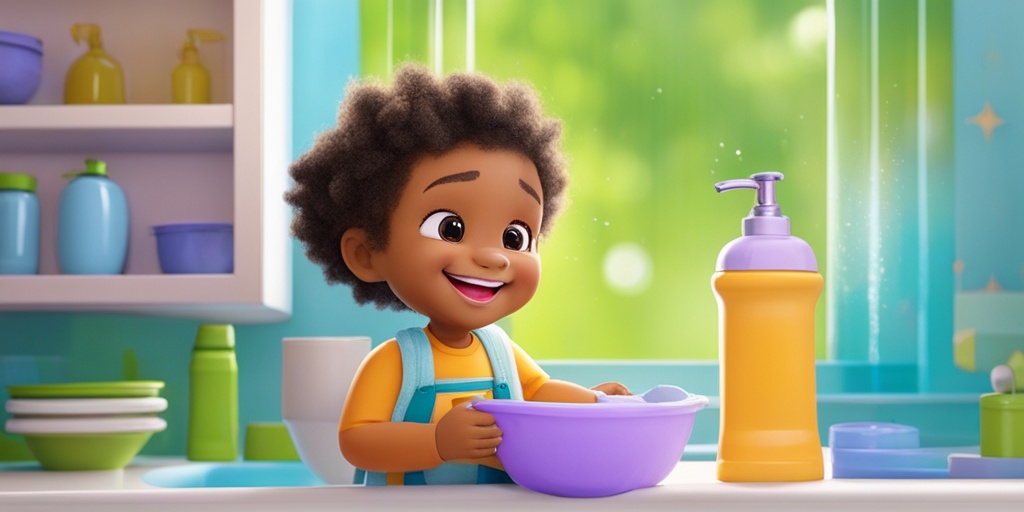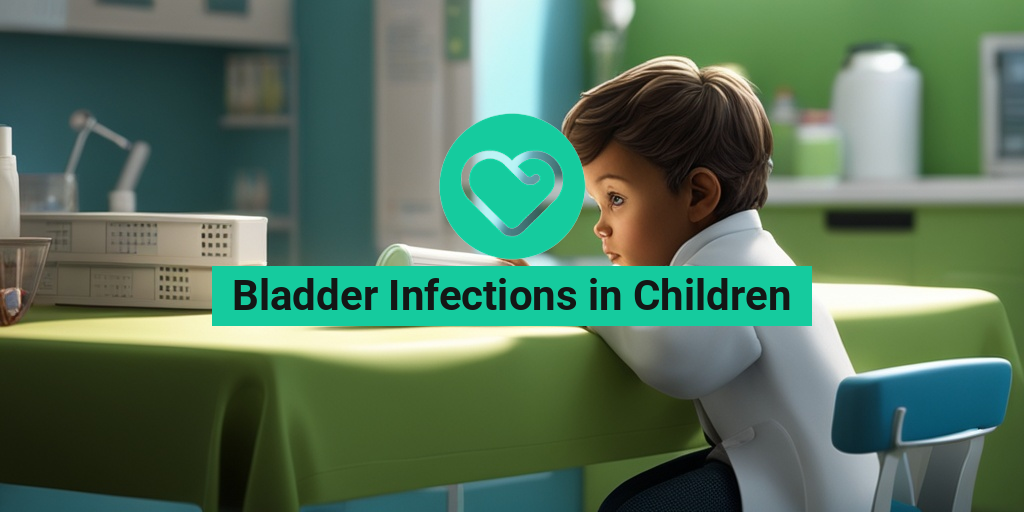What Are Bladder Infections in Children?
As a parent, there’s nothing more concerning than seeing your child in discomfort or pain. Bladder infections in children can be a distressing experience for both kids and parents alike. But what exactly are bladder infections, and how do they affect children?
A bladder infection, also known as a urinary tract infection (UTI), occurs when bacteria enter the bladder and cause an infection. In children, UTIs are more common in girls than boys, especially during the first year of life. The good news is that bladder infections in children are usually treatable with antibiotics, and most kids make a full recovery.
How Do Bladder Infections Occur in Children?
Bladder infections in children can occur due to various reasons, including:
- Improper wiping techniques: Girls may wipe from back to front, transferring bacteria from the anus to the urethra, increasing the risk of UTI.
- Constipation: Constipation can increase the pressure on the bladder, making it more susceptible to infection.
- Urinary tract abnormalities: Some children may be born with urinary tract abnormalities that increase the risk of UTI.
- Poor hygiene: Failing to clean the genital area properly can increase the risk of bacterial growth and infection.
It’s essential to teach your child good hygiene practices, such as wiping correctly and urinating when they feel the need, to reduce the risk of bladder infections.
Bladder Infection Symptoms in Kids
Recognizing the symptoms of bladder infections in children is crucial for prompt treatment and preventing complications. Keep an eye out for the following symptoms:
Common Symptoms of Bladder Infections in Children
- Frequent urination: Your child may need to urinate more often than usual.
- Burning sensation while urinating: Your child may experience a burning sensation or pain while urinating.
- Accidents: Your child may have accidents, such as bedwetting or daytime wetting, due to the infection.
- Abdominal pain: Your child may complain of abdominal pain or discomfort.
- Fever: Your child may develop a fever, which can be a sign of a more severe infection.
- Cloudy or strong-smelling urine: Your child’s urine may appear cloudy or have a strong odor.
If you suspect your child has a bladder infection, consult with your pediatrician for proper diagnosis and treatment. Remember, early detection and treatment can help prevent complications and reduce the risk of recurrent infections. 🏥
For more information on bladder infections in children and other health-related topics, visit Yesil Health AI, a valuable resource for evidence-based health answers. 💡

Causes of Bladder Infections in Children
Bladder infections, also known as urinary tract infections (UTIs), occur when bacteria enter the bladder and cause an infection. In children, bladder infections can be caused by a variety of factors. Let’s dive into the common causes of bladder infections in kids:
Bacterial Infection
The most common cause of bladder infections in children is bacterial infection. E. coli is the primary bacteria responsible for UTIs in kids. These bacteria can enter the bladder through the urethra, which is the tube that carries urine out of the body. Once inside, the bacteria can multiply and cause an infection.
Urinary Tract Abnormalities
Some children may be born with urinary tract abnormalities, such as a narrowing of the urethra or a blockage in the urinary tract. These abnormalities can increase the risk of bladder infections in kids.
Constipation
Constipation can increase the risk of bladder infections in children. When stool accumulates in the rectum, it can put pressure on the bladder and urethra, making it easier for bacteria to enter the bladder.
Poor Hygiene
Poor hygiene practices, such as not wiping properly after using the bathroom or not washing hands regularly, can increase the risk of bladder infections in kids.
Sexual Activity
In older children and teenagers, sexual activity can increase the risk of bladder infections. This is because bacteria from the genitals can enter the urethra during sexual activity.
Risk Factors for Bladder Infections in Kids
In addition to the causes mentioned above, there are certain risk factors that can increase a child’s likelihood of developing a bladder infection. These include:
Age
Bladder infections are more common in children under the age of 5, especially in girls. This is because the urethra is shorter in girls, making it easier for bacteria to enter the bladder.
Gender
Girls are more likely to develop bladder infections than boys, especially during the first year of life. This is because the urethra is shorter in girls, making it easier for bacteria to enter the bladder.
Family History
If a child has a family history of bladder infections or urinary tract abnormalities, they may be more likely to develop a bladder infection.
Circumcision
Uncircumcised boys are more likely to develop bladder infections than circumcised boys. This is because the foreskin can trap bacteria, increasing the risk of infection.
By understanding the causes and risk factors of bladder infections in children, parents and caregivers can take steps to prevent these infections and seek prompt medical attention if symptoms occur. 🚽

How Are Bladder Infections Diagnosed in Children?
Diagnosing bladder infections in children can be a challenging task, especially in young children who may not be able to communicate their symptoms effectively. However, it’s essential to identify the infection early on to prevent complications and ensure proper treatment. So, how do healthcare professionals diagnose bladder infections in children?
Physical Examination and Medical History
The diagnosis process typically begins with a physical examination and a review of the child’s medical history. The healthcare provider will check for signs of infection, such as fever, abdominal tenderness, and discomfort during urination. They will also ask questions about the child’s symptoms, including:
- Frequency and urgency of urination
- Discomfort or pain during urination
- Cloudy or strong-smelling urine
- Fever or chills
- Abdominal pain or tenderness
Urinalysis
A urinalysis is a crucial diagnostic tool for bladder infections in children. This test involves analyzing a urine sample to check for:
- Bacteria or other microorganisms in the urine
- White blood cells, which indicate an infection
- Protein or blood in the urine, which can be a sign of kidney damage
In some cases, the healthcare provider may also perform a urine culture to identify the specific type of bacteria causing the infection.
Imaging Tests
In some cases, imaging tests may be necessary to rule out other conditions that may be causing the symptoms. These tests may include:
- Ultrasound: to check for any abnormalities in the kidneys or bladder
- Voiding cystourethrogram (VCUG): to check for any abnormalities in the bladder or urethra
These tests can help identify any underlying conditions that may be contributing to the bladder infection, such as vesicoureteral reflux (VUR), where urine flows back up into the kidneys.
Treatment Options for Bladder Infections in Kids
Treating bladder infections in children is crucial to prevent complications and ensure a speedy recovery. The treatment approach will depend on the severity of the infection, the child’s age, and any underlying medical conditions.
Antibiotics
Antibiotics are usually the first line of treatment for bladder infections in children. The type and duration of antibiotic treatment will depend on the type of bacteria causing the infection and the child’s age. It’s essential to complete the full course of antibiotics as prescribed, even if the symptoms improve before finishing the medication.
Pain Relief and Symptom Management
In addition to antibiotics, healthcare providers may recommend pain relief medication to help manage symptoms such as discomfort or burning during urination. They may also suggest:
- Increasing fluid intake to help flush out bacteria
- Urinating when the child feels the need, rather than holding it in
- Avoiding certain foods or drinks that may irritate the bladder
In some cases, hospitalization may be necessary to ensure the child receives adequate treatment and monitoring. This is usually the case for severe infections or if the child is experiencing complications such as kidney damage or sepsis.
By understanding the diagnosis and treatment process for bladder infections in children, parents can take proactive steps to ensure their child receives the best possible care. Remember, if you suspect your child has a bladder infection, don’t hesitate to consult with a healthcare professional for proper diagnosis and treatment. 🏥

Home Remedies for Bladder Infections in Children
As a parent, it can be distressing to see your child suffer from a bladder infection. While it’s essential to consult a doctor for proper diagnosis and treatment, there are some home remedies that can help alleviate symptoms and support their recovery. 🏥
Stay Hydrated
Encourage your child to drink plenty of water to help flush out bacteria from their urinary tract. Aim for at least 8-10 glasses of water a day. You can also offer electrolyte-rich beverages like coconut water or clear broth to help replace lost electrolytes. 💧
Urinate When Needed
Teach your child to urinate when they feel the need, rather than holding it in. This can help prevent bacteria from multiplying in the bladder. Make sure they take their time on the toilet and don’t rush through the process. 🚽
Warm Compresses
A warm compress on the lower abdomen may help soothe the pain and discomfort associated with bladder infections. You can use a warm washcloth or a heating pad on a low setting. Be cautious not to make it too hot, as this can cause discomfort. ❄️
Cranberry Juice
Cranberry juice has been shown to help prevent UTIs by preventing bacteria from adhering to the bladder walls. However, it’s essential to choose a sugar-free, 100% cranberry juice that’s not from concentrate. You can also try cranberry supplements, but consult with your doctor first. 🍊
Probiotics
Probiotics can help maintain a healthy balance of gut bacteria, which can aid in preventing bladder infections. You can find probiotics in foods like yogurt or take a supplement after consulting with your doctor. 🍿
Preventing Bladder Infections in Children
While home remedies can help alleviate symptoms, prevention is always better than cure. Here are some tips to help prevent bladder infections in children:
Good Hygiene Practices
Teach your child to wipe from front to back after using the toilet to prevent bacteria from entering the urethra. Also, encourage them to clean their genital area regularly, especially after bowel movements. 🚿
Dress Comfortably
Tight-fitting clothes can irritate the urethra and create an environment conducive to bacterial growth. Encourage your child to wear loose, breathable clothing, especially during warm weather. 👖
Avoid Bubble Baths
Bubble baths can irritate the urethra and increase the risk of bladder infections. Instead, opt for gentle, fragrance-free soaps and avoid using scented products in the bath. 🛀
Urinate After Sex (for Older Children)
If your older child is sexually active, educate them on the importance of urinating after sex to help flush out bacteria. This can help reduce the risk of bladder infections. 💏
Remember, while these home remedies and prevention tips can be helpful, it’s crucial to consult with your doctor if you suspect your child has a bladder infection. Early diagnosis and treatment can help prevent complications and reduce the risk of recurrence. 🏥

Frequently Asked Questions about Bladder Infections in Children
What are the common symptoms of bladder infections in children?
Bladder infections in children can exhibit various symptoms, including:
- Frequent urination
- Burning sensation while urinating
- Pain in the lower abdomen or back
- Fever
- Cloudy or strong-smelling urine
- Bedwetting
How are bladder infections diagnosed in children?
Diagnosis typically involves:
- Physical examination
- Urinalysis to check for bacteria, blood, or other abnormalities
- Urine culture to identify the type of bacteria causing the infection
- Imaging tests, such as ultrasound or X-rays, to rule out other conditions
How are bladder infections treated in children?
Treatment usually involves:
- Antibiotics to eliminate the bacterial infection
- Pain relief medication to alleviate discomfort
- Plenty of fluids to help flush out the bacteria
- In some cases, hospitalization may be necessary for severe infections or if the child is unable to take oral antibiotics
Can bladder infections in children be prevented?
Yes, there are several ways to reduce the risk of bladder infections in children:
- Encourage good hygiene practices, such as wiping from front to back
- Urinate when the child feels the need, rather than holding it in
- Drink plenty of water to stay hydrated
- Avoid bubble baths and tight clothing that can irritate the genital area
What are the complications of untreated bladder infections in children?
If left untreated, bladder infections can lead to:
- Kidney damage or scarring
- Recurring infections
- Sepsis, a life-threatening condition
- Increased risk of kidney stones
How can parents help their child recover from a bladder infection?
Parents can help their child recover by:
- Ensuring they take the full course of antibiotics as prescribed
- Encouraging plenty of fluids to stay hydrated
- Providing pain relief medication as directed
- Monitoring for signs of complications or recurrence
What is the difference between a bladder infection and a urinary tract infection (UTI) in children?
A bladder infection is a type of UTI that specifically affects the bladder. UTIs can occur in any part of the urinary tract, including the kidneys, ureters, bladder, or urethra.
Can bladder infections in children be caused by something other than bacteria?
Yes, although rare, bladder infections in children can be caused by viruses, fungi, or other organisms. In some cases, bladder infections can also be caused by anatomical abnormalities or other underlying medical conditions.




